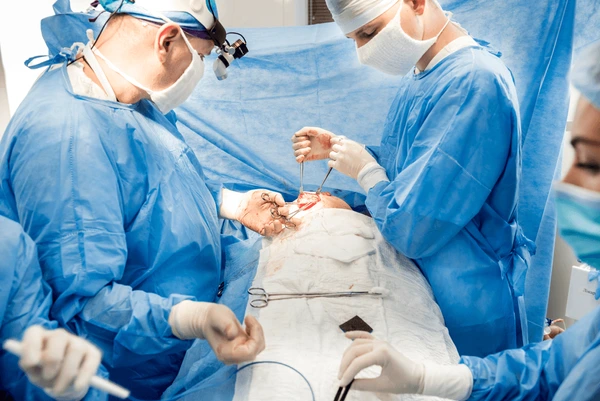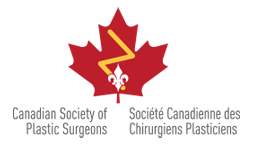- Home
- Breast Surgery Procedures
- Cosmetic Breast Surgery
- Breast Implant Revision and Removal in Toronto
Breast Implant Revision and Removal in Toronto
Breast implant removal has become increasingly common in our practice. Although breast augmentation remains a gratifying procedure for 95% of patients, there are over 35 million women with breast implants worldwide and an estimated 20% will seek out revision surgery by 10 years.
Reasons for Revision and Removal of Breast Implants

Breast Implant Dysphoria
Breast implant dysphoria is perhaps the most common. Large breast implants that were an attractive option as a 20-year-old may no longer be as appealing in your 50s. This can be because the implants are heavy, or they may feel or look unnatural. Or there may be a vague sense of concern that implants that have been in for a long time may need removal.
Abnormalities on imaging
A common scenario is the discovery of a possible breast implant rupture on mammogram, ultrasound or MRI. The idea of a ruptured implant with increased exposure to silicone gel can be a source of anxiety and can motivate women to seek out removal.
Cosmetic failure
Overt cosmetic changes in the breast from a saline implant deflating is a frequent cause for a visit to the plastic surgeon. Unlike silicone gel implants, when a saline implant develops a leak, the volume dissipates quickly and there is a cosmetic shrinkage of that breast. Although certainly replacement of the implant is an option at that time, for some women this is a call to remove their implants entirely. Aging, pregnancy and weight-change are other factors that can lead to cosmetic dissatisfaction and consideration of revision breast surgery.
Breast Implant Illness
Breast implant illness is a complicated topic. There are women who have had breast augmentation, sometimes in the remote past, who subsequently develop bodily symptoms or illness that cannot be otherwise explained. A hypersensitivity reaction to the silicone implant has been implicated by some as a cause of these symptoms. Medical research and statistical analysis of the vast numbers of women who have breast implants do not confirm the presence of an illness or disease related specifically to breast implants, however there may be individuals who indeed are experiencing symptoms or illness on the basis of their implants. Moreover, someone who is anxious that perhaps their illness is coming from their implants is unlikely to resolve their anxiety without actually having the implants removed. There does seem to be some relief of symptoms with the removal of implants, but research suggests this is likely on the basis of reduced anxiety rather than the removal of a disease-causing implant. Implant removal appears to be sufficient insofar as helping patients who are experiencing breast implant illness. Aggressive capsulectomy creates increased risks of bleeding and deformity and does not appear to provide further symptom relief.
Textured Implants/ALCL
Textured implants were a popular device as they allowed the surgeon to choose a specific breast implant height and width that would be optimal for the patient, and the textured surface of the implant would allow for adhesion to the surrounding tissues and prevent implant rotation. Millions of women have had this augmentation performed and are doing fine, but it has become evident that a small percentage of women with textured implants will develop a disease called anaplastic large cell lymphoma around their implants. The rate of this occurring appears to be between 1/500 and 1/ 5000 patients. The development of ALCL is a consideration in any woman with texture implants who develops a mass, hardening, or swelling of a breast. In this situation fluid must be sent and biopsy performed to rule out a cancer. The current advice for women with textured implants is that if there are no problems the implants do not need to be removed. Nevertheless, removal of the implants and possible replacement with smooth implants is considered a reasonable step for mitigating the risks of developing ALCL.
Capsular contracture
Capsular contracture describes the development of hardening of the fibrous tissue that naturally forms around any foreign body including a breast implant. If this capsular contracture results in cosmetic compromise or tenderness in the breast, it is possible to try medications or various surgical maneuvers to prevent or reverse the contracture. Sometimes removal of the implants is necessary to obtain resolution.
Preoperative considerations
Assuming there are no urgent requirements for surgery it is best for you to obtain any investigations well before your surgery to confirm that you are healthy for a procedure. Your best cosmetic outcome will be obtained if you are at a stable body weight, as weight gain and loss can both degrade the result.
Imaging
Imaging is valuable before breast implant revision surgery, as the presence of a ruptured breast implant may create opportunity for warranty coverage of surgery costs. It also allows the surgeon to better plan the operation that will be necessary. The presence of a suspicious mass on imaging would be an indication for biopsy to confirm the mass is not a cancer before your surgery.
Fluid collection or a mass.
Particularly in the setting of textured implants, fluid or mass introduces a concern for anaplastic large cell lymphoma. Fluid aspiration (perhaps aided by ultrasound) can be sent for cytology and flow cytometry and this can provide a diagnosis prior to your surgery.
Symptoms of breast implant illness
It is not uncommon for a patient to come to our office with the concern about breast implant illness, but with no prior assessment by a clinician to rule out other causes for their symptoms. We recommend an assessment by an appropriate clinician prior to undertaking breast surgery, as a serious illness may be present and tunnel vision for breast implant illness would delay the appropriate diagnosis and perhaps result in the unnecessary removal of the breast implants.

Warranty
There are different warranties available to patients with breast implants that will cover either the replacement of failed implants or some of the costs towards the surgery. This information is available online and your surgeon should be able to help you to understand the benefits and limits of your warranty.
Insurance Coverage
In many health jurisdictions the cost to revise a cosmetic procedure is not covered by insurance. Investigations to rule out serious disease like anaplastic large cell lymphoma or breast cancer, or treatment for this condition would be covered by insurance.
Options for surgery
Removal without replacement
Removal of a breast implant without replacement will inevitably result in a loss of volume. This is not always a severe problem, and we do not always recommend a breast lift if an acceptable result can be obtained otherwise. Fluid collection (seroma) is always a concern after breast implant removal as there remains a large space previously occupied by the implant that must be managed. Generally, this requires removal of some portion of the breast implant capsule to facilitate the body’s absorption of any fluid. Any diseased appearing capsule should be removed for biopsy and we will generally perform what is known as a popcorn capsulorrhaphy to encourage the capsular pocket to shrink decreasing the risk of a fluid collection and potentially decreasing the sagging of breast tissue. The term popcorn refers to the popping sound that is heard when the capsule is cauterized while held with an insulated forceps. If a seroma was present at the time of surgery, we may choose to place a drain temporarily to discourage fluid collecting and preventing contraction of the implant capsule. A compression vest is also applied towards this same goal.
Replacement of breast implant
Replacement of an anatomically shaped textured implant with a round smooth silicone gel implant might be expected to result in cosmetic compromise, however several studies have shown good cosmetic results can be obtained. Decisions must be made about the size of the implant, and as well, silicone gel implants come in different densities which will impact the result. A low-density implant generally feels softer however has more rippling than a high-density implant which may feel unnaturally firm.
Fat Grafting
If volume restoration without implants is a priority, fat grafting can be performed at the time of implant removal. Fat is harvested from other areas in the body and after processing to remove any dead tissue the graft is placed in both the muscle layer and outside of the breast capsule to restore volume. It is not effective to put fat graft inside the pre-existing capsular space as this fat would have no access to a blood supply and would inevitably die, despite creating an initial appearance of success. Fat grafting seems effective at providing at most 100 to 200cc’s of augmentation, and we discuss the possibility of requiring two or three fat grafting procedures to achieve an appearance that would match that of the original breast implant.
Breast Lift
Breast lift is an important consideration in any breast implant revision. The main downside of breast lift surgery is the inevitable scars around the edge of the areola and extending down to the fold underneath the breast. The advantage of breast lift is that in addition to being able to reshape the breast, remove excess skin and reduce the size of the areola, a breast lift also provides excellent exposure of the breast implant capsule to facilitate a total capsulectomy if desired.
Recovery from Surgery
These breast implant removal and revision procedures can all be performed on an outpatient basis through an ambulatory surgical facility. Our routine is to infiltrate a long-acting anesthetic into the wound edges so that the immediate postoperative period is relatively pain free. Incisions remain covered until your post-op visit about four days following surgery. During that initial period, oral narcotics can be helpful but are not necessary. You may also be prescribed an antibiotic for a few days, and tranexamic acid to decrease the risk of postoperative bleeding. If a drain is placed it is removed at the 1st post op visit four to five days following surgery, and at that point routine showering and simple daily wound care with flamazine cream and sterile pads is typical. Sedentary activities are fine immediately after surgery but a return to exercise is discouraged until day 10 to avoid an unnecessary postoperative bleed. Patients usually return to the gym by three weeks and are playing full contact sports by six weeks. We’d like to see our patients about four days after surgery and then two weeks later to confirm wound healing is progressing and to recommend options to minimize scarring.
Long term issues
If cosmesis after simple removal is not acceptable after six months, discussion regarding revision surgery including implant augmentation, fat grafting or breast lift would be appropriate. We ask our patients to contact us if they develop any unusual masses or swelling in their breast as late seromas can occur and ALCL must be ruled out if there is a history of textured breast implant use. Routine breast surveillance can be provided by a family doctor, but any abnormalities should return to us for expert management.














